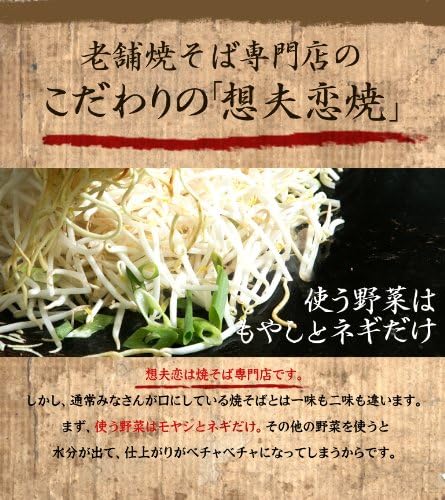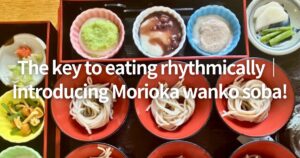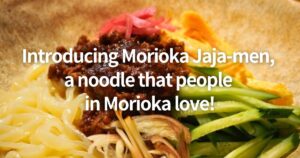It’s early summer every day, and as the weather gets hotter, it’s easier to eat noodles that go down your throat than rice, and we tend to reach for them more often.
In the noodle connection from yesterday, I would like to feature local yakisoba noodles this time.
Yakisoba is mainly Chinese noodles stir-fried with meat, seafood, vegetables, etc. Did you know that there are various types of yakisoba in different regions of Japan?
In addition, yakisoba is regularly ranked high in the “B-1 Grand Prix,” a national competition held once a year, with each region holding its own grand prix.
So, in this article, I will explain the origin and appeal of the local yakisoba culture, as well as recommended restaurants and menus, including my own experiences.
Voice: I hope this will be a good opportunity for you to become interested in local yakisoba.
I hope this will be a good opportunity for you to become interested in local yakisoba.
What is the definition of yakisoba in the first place?


Yakisoba is a dish consisting of Chinese noodles stir-fried with meat and vegetables.
Originally, it originated from Chinese “stir-fried noodles,” and in Japan, “yakisoba with sauce,” especially with Worcestershire sauce, is widely popular.
For a long time, it was thought to have originated after World War II, but recent research has shown that it was already served at a food stall in Asakusa, Tokyo, around 1935.
In the Meiji and Taisho periods, it was served only in Chinese restaurants, and was usually flavored with soy sauce or salt, not the current sauce flavor.
What are the reasons for the various characteristics of yakisoba in different regions?
Yakisoba developed as a food suitable for cooking in a food stall.
Because it is easy to prepare and does not require boiling water or soup, it has evolved uniquely in each region.
In eastern Japan, steamed noodles and a strong sour sauce are the main characteristics, while in western Japan, boiled noodles and a sweet sauce are the main characteristics.
After World War II, in order to save expensive flour, the amount of inexpensive cabbage was increased, and the thick sauce compensated for the loss of flavor due to water.
Today, there are more than 50 different types of Gotochi Yakisoba throughout Japan, each with its own unique flavor and ingredients.
What is the “B-1 Grand Prix,” the spark that ignited the local yakisoba boom?
The B-1 Grand Prix is a regional development event that started in 2006 in Hachinohe City, Aomori Prefecture.
The “B” initially meant “B-class local gourmet,” but was redefined as ‘B’ for “brand” after 2013.
The organizer, “Ai B League,” aims not to sell food, but to enhance the local brand and attract people to the town through local cuisine.
The most successful example is “Fujinomiya Yakisoba,” which, after winning the Gold Grand Prix twice, brought 43.9 billion yen in economic benefits over nine years.
I guess a big part of my interest in yakisoba came from being featured in the “B-1 Grand Prix.
Three Attractions of Local Yakisoba


I have summarized some of the attractions of local yakisoba that I find.
Endless regional variations
There are more than 50 types of local yakisoba throughout Japan, and the same dish called “yakisoba” can be found in an astonishing variety.
Even within the same “yakisoba” dish, there is an astonishing variety of noodle types, seasonings, ingredients, and toppings, depending on the region.
This is a cultural heritage of food that reflects the regional and prefectural characteristics of Japan.
Yakisoba, which has evolved uniquely in each region, is associated with local specialties and food culture.
For example, seafood such as squid and scallops are used in seaside areas, local vegetables and specialty meats are used in mountainous areas, and local seasonings and production methods are used.
The ability to experience the diverse food cultures of different regions of Japan through a single dish is one of the major attractions of local yakisoba.
Regional promotion and storytelling
Japanese local yakisoba is not just a food, but also plays an important role in regional development and town revitalization as a “B-class gourmet.
Through events such as the “B-1 Grand Prix,” yakisoba has gained nationwide recognition and developed into a source of regional pride.
For example, Fujinomiya yakisoba won the Gold Grand Prix at the B-1 Grand Prix in 2006 and 2007, and its economic ripple effect reached 43.9 billion yen over a nine-year period, an astonishing success story.
Such efforts to revitalize local communities through “food” match the “hands-on” travel style and the need to “experience local culture and history” that foreign visitors to Japan seek, and knowing the story behind the local yakisoba will lead to a deeper understanding of Japanese culture.
Coexistence of familiarity and depth
Yakisoba is a familiar and affordable Japanese food compared to high-end Japanese food, making it an ideal entry point for foreigners to debut Japanese food.
With the growing popularity of Japanese food overseas, yakisoba is gaining recognition as a popular Japanese food culture alongside sushi and ramen.
Since the registration of Japanese food as a UNESCO Intangible Cultural Heritage, Japanese food has been attracting increasing attention around the world, and visitors are coming to Japan in search of authentic Japanese food.
Yakisoba, a simple dish that has evolved in its own unique way in each region, is an excellent teaching tool for understanding Japan’s diverse food culture.
Another hidden value of Gotochi Yakisoba is that Yakisoba, a familiar daily meal, can actually be a fresh and fascinating experience of Japanese culture for people from overseas.
The idea of revitalizing the local community with local yakisoba is a good one for both the restaurants and the customers!
My 3 favorite local yakisoba and recommended specialty restaurants
I will introduce my favorite local yakisoba and specialty restaurants.
My 3 recommendations for local yakisoba and famous restaurants
My 3 recommendations for local yakisoba and famous restaurants
Fujinomiya Yakisoba(Shizuoka Prefecture)


✅ Recommended Points
- Generally, yakisoba noodles are produced through a “steaming and then boiling” process, but in Fujinomiya, the “steaming and then cooling” process produces noodles with less water content and more firmness.
- Another key feature is the addition of “meat dregs” (deep-fried dregs left after squeezing out lard), which is the key ingredient for flavor, and a sprinkling of “sardine shavings” as a finishing touch.
- This shaved sardine powder spreads the flavor of the dish as soon as you take a bite, creating a unique taste.
- The unique texture and flavor of the dumpling have been highly evaluated, and it has twice won the Gold Grand Prix at the B-1 Grand Prix and been inducted into the Hall of Fame.
- There are about 150 yakisoba restaurants in Fujinomiya City, and each restaurant uses different thickness of noodles and has a variety of flavors from light to rich, making it a soul food that many people become addicted to once they try it.


✅ Recommended stores
- Sano Shokudo
- One of the most popular Fujinomiya yakisoba restaurants in Fujinomiya City, Shizuoka Prefecture, is Sano Shokudo.
- Located about a 7-minute walk from Fujinomiya Station, this long-established diner has been in business for over 60 years.
- It offers the authentic taste that has long been loved by the locals.
- Recommended here is the “Yakisoba Mix” (910 yen), which uses Marumo Foods’ noodles characterized by their “sticky texture.
- The dish is topped with squid, pork, and egg in addition to a generous amount of meat cake, and is topped with a slightly spicy original blend of sauces.
- Boasting a rich texture and deep flavor, it is the quintessential Fujinomiya yakisoba.
Yokote Yakisoba (Akita Prefecture)
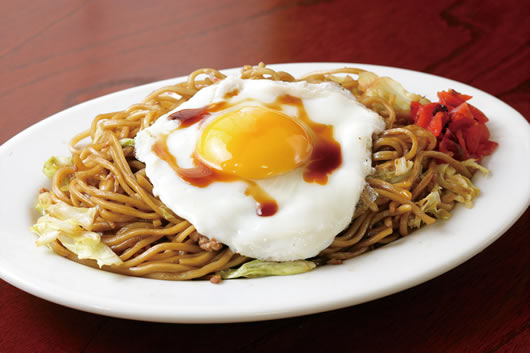

✅ Recommended Points
- Yokote Yakisoba is a local delicacy popular in Yokote City, Akita Prefecture, and its most distinctive feature is the use of thick, straight boiled noodles.
- Cabbage and ground pork are used as ingredients, and the sauce is generally sweetened with Worcestershire sauce plus each restaurant’s original sauce.
- The most characteristic toppings are the semi-boiled fried egg and the accompanying fukujinzuke pickles, which are eaten in the Yokote style by breaking up the yolk of the fried egg and mixing it with the noodles.
- The yakisoba became nationally known after winning the Gold Grand Prix at the 2009 B-1 Grand Prix, and is now recognized as one of Japan’s top three yakisoba.
- There is also a local competition called “Yokote Yakisoba Shitennou Kessen” (Yokote Yakisoba Four Wins), and it is a popular local gourmet food with each restaurant competing against each other.
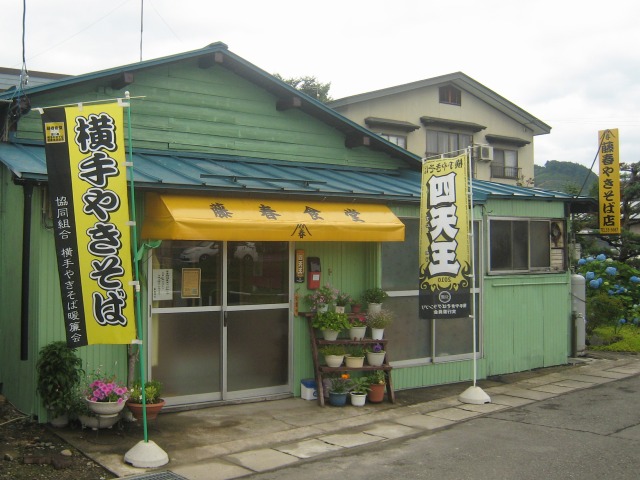

✅ Recommended stores
- Fujiharu Shokudo
- The most popular yakisoba restaurant in Yokote City, Akita Prefecture, is “Fujiharu Shokudo.
- It is a regular restaurant that has won the “Yokote Yakisoba Four Heavenly Kings Competition” many times, and is a talented yakisoba restaurant that focuses solely on yakisoba.
- The most popular menu item is the yakisoba (600-700 yen range), which features thick, straight noodles baked to a fragrant aroma and sweet sauce.
- It is topped with a half-boiled fried egg and served with a side of fukujinzuke (pickles), the Yokote way.
- When the yolk of the egg is mixed with the noodles, the sweet sauce becomes milder and more delicious.
- This popular restaurant is visited by many tourists as well as locals.
Hita Yakisoba (Oita Prefecture)
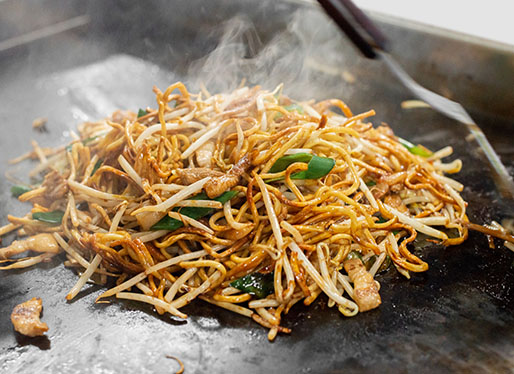

✅ Recommended Points
- Hita Yakisoba is a local B gourmet dish representing Hita City, Oita Prefecture.
- Instead of frying the noodles as in the case of ordinary yakisoba, they are grilled over high heat on a griddle with more oil than usual, so that some of the noodles are burnt, which gives the noodles a unique crispy texture.
- The ingredients are simply pork, bean sprouts, and green onions, with no vegetables, which contain abundant water, because excess water will spoil the crispy texture.
- The bean sprouts are quickly stir-fried to retain their crunchiness, and finally seasoned with a sweet and spicy sauce that is a secret tradition of each restaurant.
- There are more than a dozen restaurants serving this dish in Hita City, and it has now spread outside the prefecture, attracting fans from all over the country.
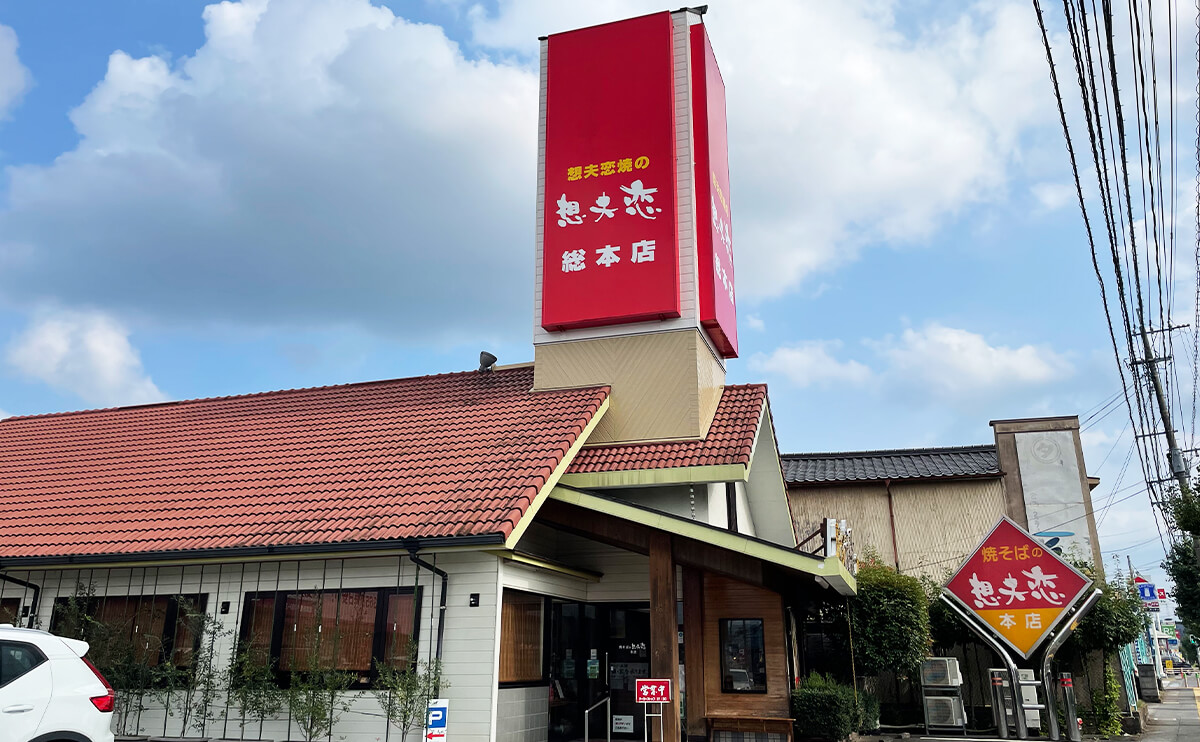

✅ Recommended stores
- Sofuren Main Branch
- Sofuren Main Branch is a must-visit restaurant for Hita yakisoba in Hita City, Oita Prefecture.
- Founded in 1957, it is the original store where Hita yakisoba originated, and has been loved by locals for over 60 years.
- The signature dish, “Sofu Koi Yaki” (1,050 yen), features fresh noodles that are boiled to order and then slowly grilled on an iron plate with a thick spatula developed by the restaurant.
- The crispy noodles, “Japanese Pork Mochi Buta” from Oita Prefecture, and crispy bean sprouts intertwine perfectly with the secret sauce.
- The crispy noodles also have a juicy flavor, making this dish the quintessential Hita yakisoba.
I cannot forget the delicious Hita Yakisoba that my family and I had when we went to visit Hita, and I am looking for a place where I can have it in Tokyo!
Column: Why is red ginger served with yakisoba?


There are multiple reasons why red ginger is served with yakisoba.
According to the Fujinomiya Yakisoba Society, it is thought to have originated spontaneously as a palate cleanser for greasy yakisoba.
The dagashiya, where yakisoba originated, also served okonomiyaki, and red ginger seems to have become a staple in both.
The bright red color added to yakisoba, which is entirely brown, also provides a visual accent and makes the dish look delicious.
Furthermore, the odor-eliminating effect of ginger and the digestion-promoting effect of ume vinegar have the functional advantage of preventing stomach upset after a greasy meal.
Red ginger is also effective as a “chopstick rest” and serves to refresh the mouth in the middle of a long meal.
Red ginger was not my favorite when I was a child, but as an adult, I found it strange that I was missing red ginger in my yakisoba…
How to enjoy local yakisoba for foreign visitors to Japan


To enjoy local yakisoba to its fullest, try these tips:
✅ Enjoy the diversity of textures
The greatest attraction of Japanese local yakisoba is the texture of the noodles, which are completely different in each region.
Fujinomiya yakisoba’s chewy texture with strong firmness due to the “steamed and then cooled” method, Yokote yakisoba’s thick and straight boiled noodles with elasticity, and Hita yakisoba’s crispy texture cooked on an iron plate are so diverse that it is hard to believe they are the same “yakisoba.
When touring multiple regions during your visit to Japan, you can experience the depth of Japanese food culture by comparing yakisoba from different regions.
If you describe the dish as “texture” in English, many foreigners will be interested in the differences in texture.
✅ Taste with local stories
Gourmet experiences in Japan are not just “meals” but “cultural experiences.
Local yakisoba is deeply connected to regional revitalization, and the taste is deepened many times over when you learn about the history and background of its creation.
For example, Fujinomiya yakisoba won the B-1 Grand Prix for two consecutive years, contributing greatly to the local economy; Yokote yakisoba is a taste of the common people that originated from a food stall after World War II; and Hita yakisoba was born from the idea of “grilled noodle dishes.
Many restaurants have English menus or menus with pictures, so it will be a fun experience to communicate with the owner while using a smartphone translation app.
✅ Imitate the local way of eating
Each local yakisoba restaurant has its own unique “way of eating” and by imitating it, you can enjoy the authentic taste to the fullest.
For example, Yokote yakisoba is served with a half-boiled fried egg yolk mixed with noodles and fukujinzuke pickles on the side, Fujinomiya yakisoba is enjoyed with the aroma of shaved sardines, and Hita yakisoba is enjoyed with crispy noodles and crunchy bean sprouts at the same time.
Many Japanese also enjoy local beverages with their yakisoba.
Pair it with a local craft beer, sake, or cider for a more in-depth dining experience.
Being able to learn about the local culture through food is an important element in understanding each other’s culture and values.
You can easily taste local yakisoba at home!
You can purchase authentic local yakisoba, which is usually hard to find, from the comfort of your own home on Amazon.
In this article, I would like to introduce some of the local yakisoba that I recommend and that are available on Amazon.
I hope you will find it helpful in selecting your favorite local yakisoba.
If you are interested, check out the following products on Amazon!
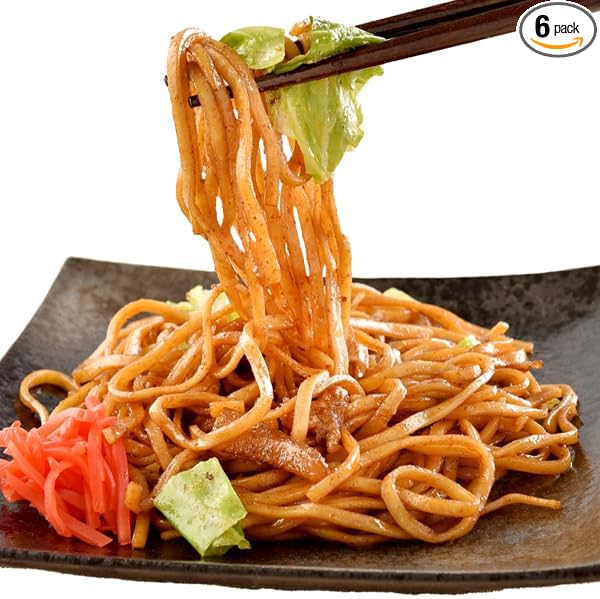

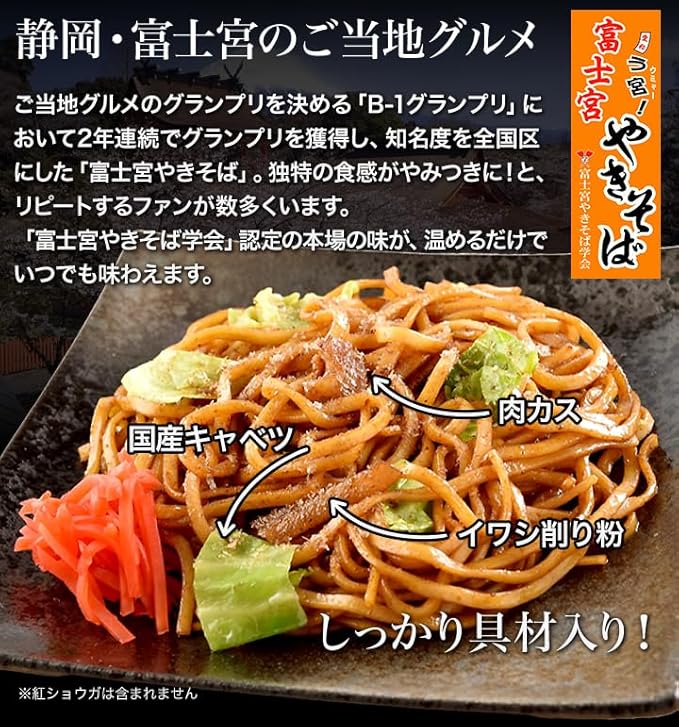

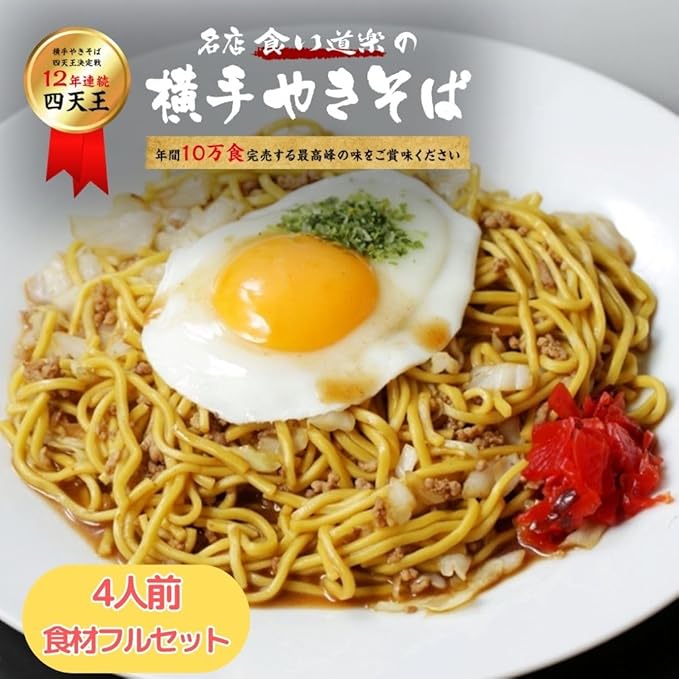

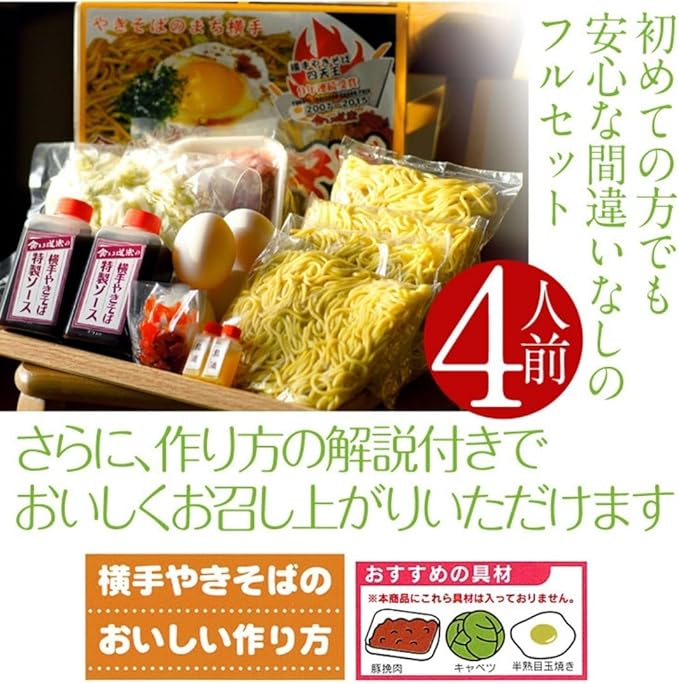

This Yokote Yakisoba is the type you can make at home, so please arrange the ingredients to make your own Yokote Yakisoba.


